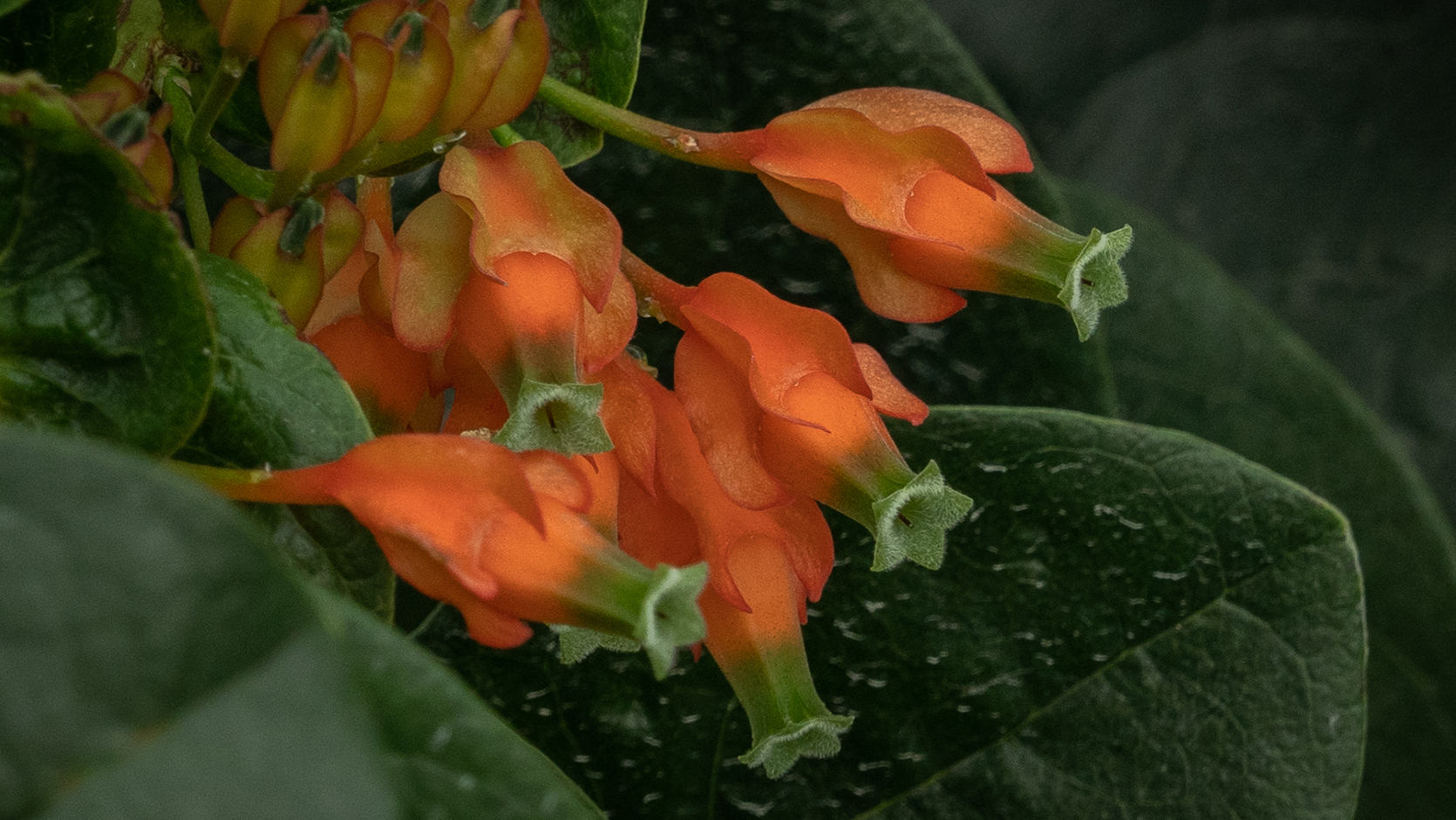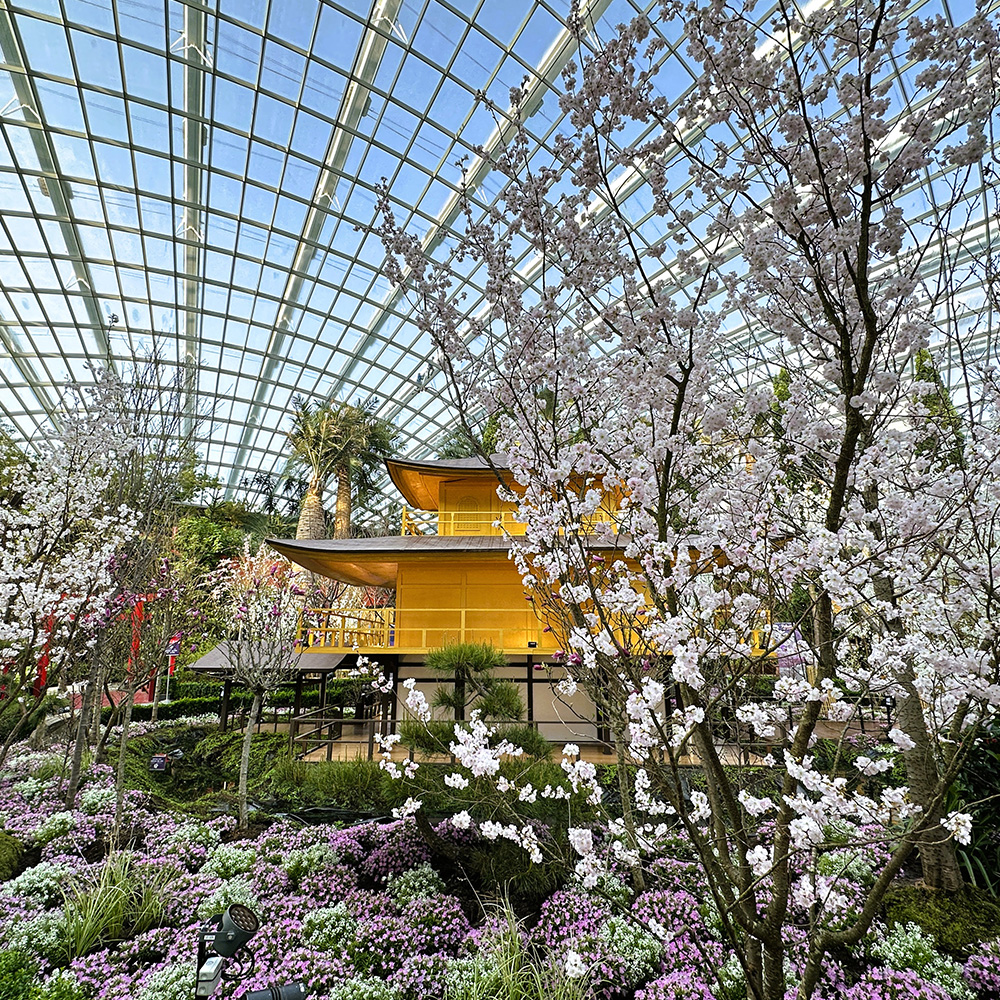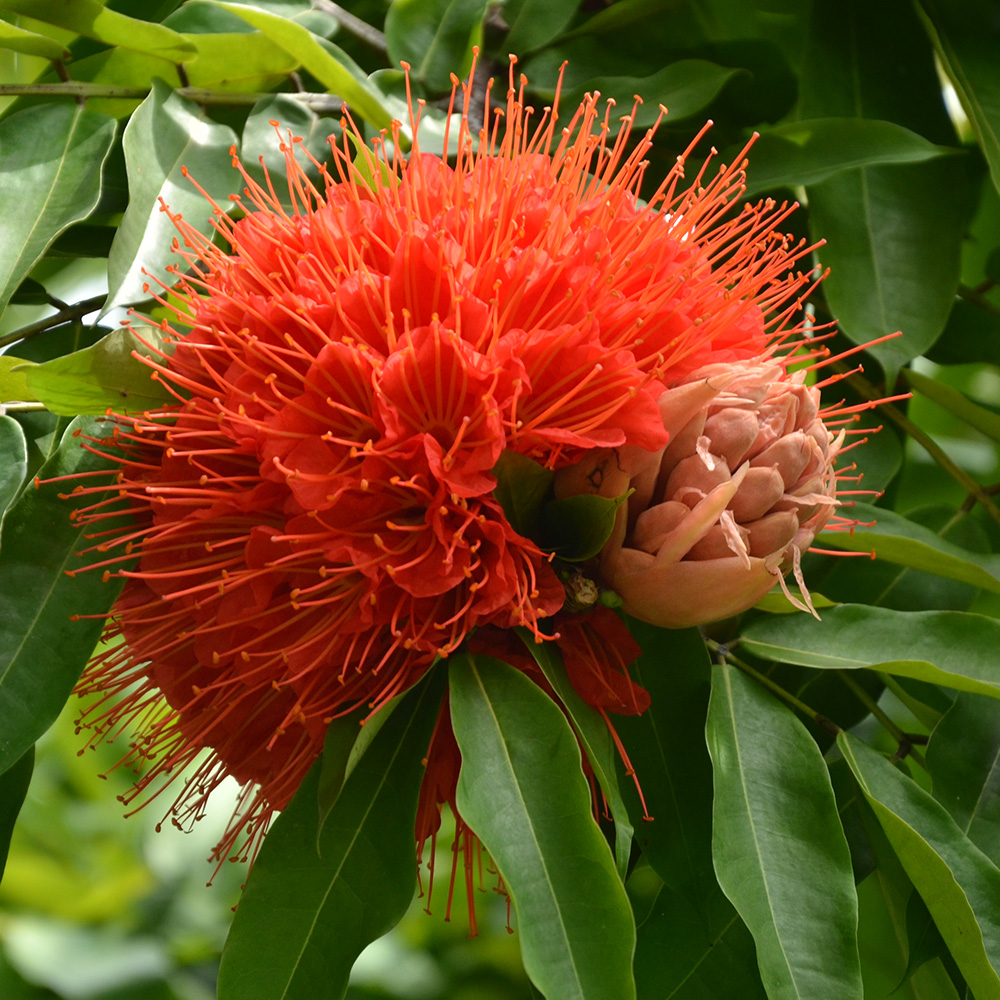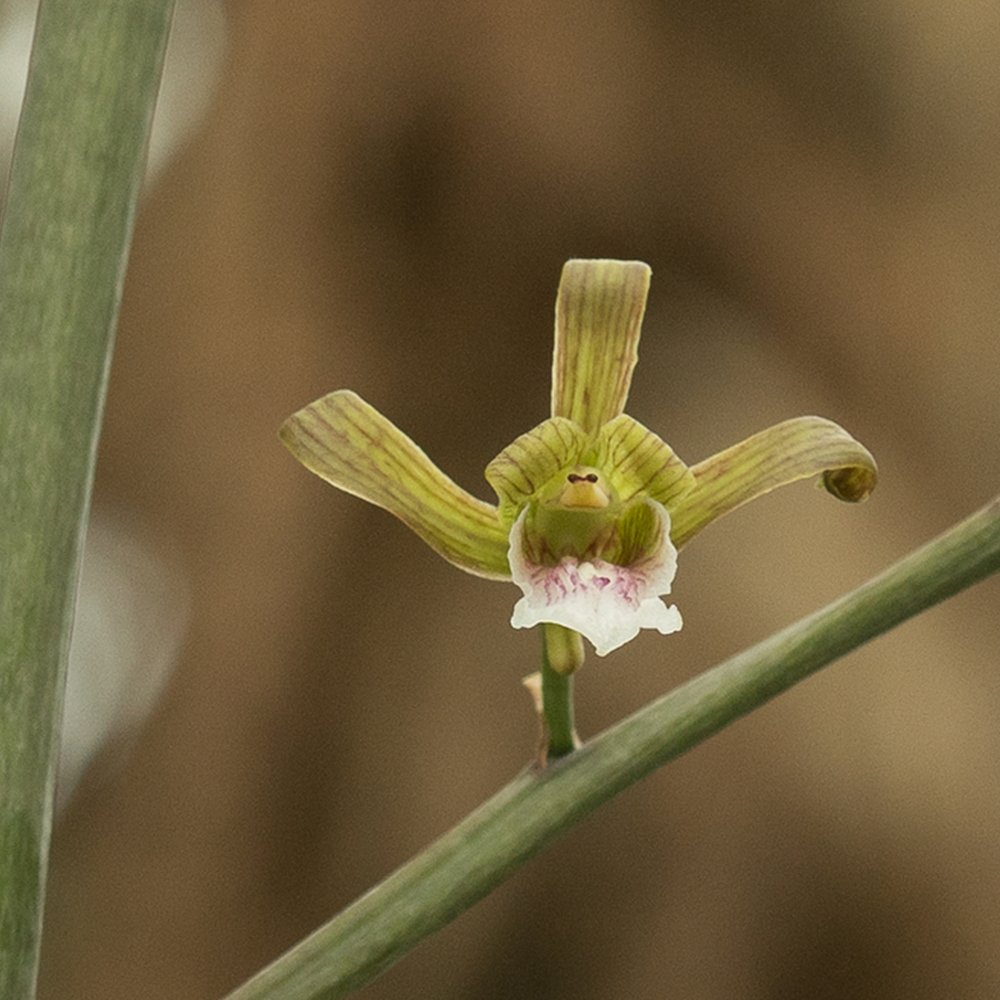Water Lily (Nymphaea cultivars)
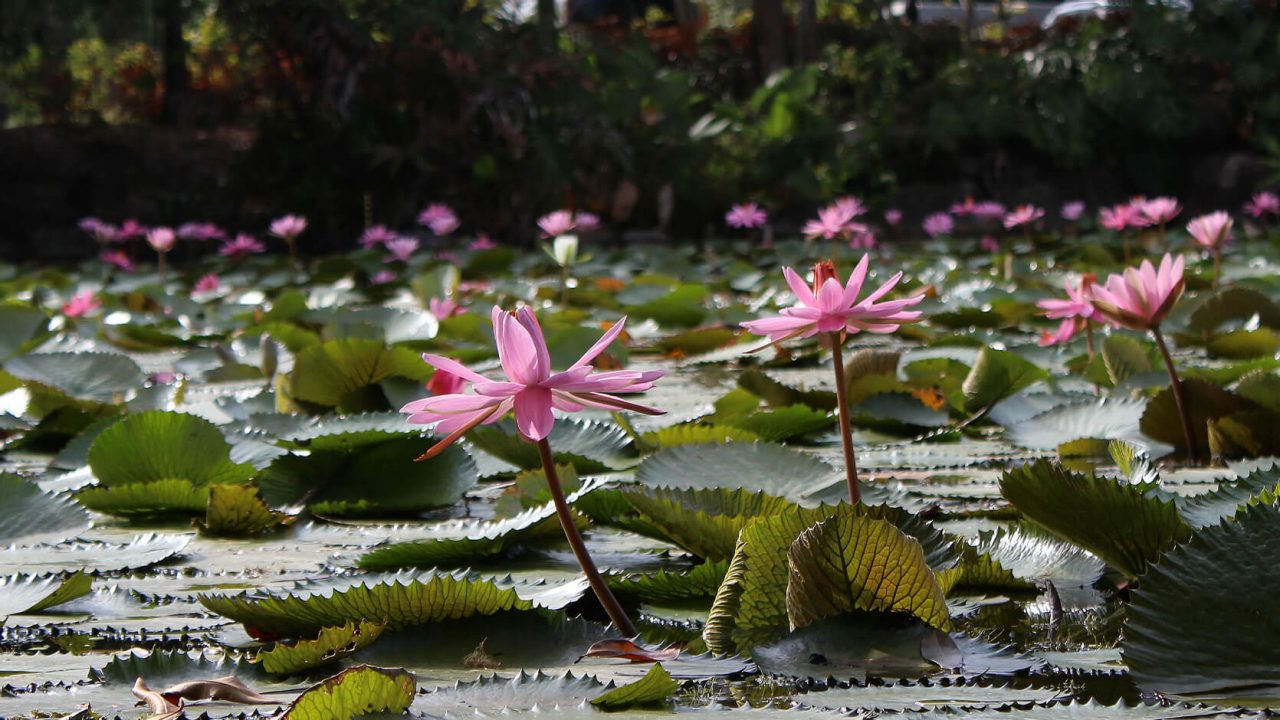 The pink flowers of water lilies, emerging above their toothed, circular leaves.
The pink flowers of water lilies, emerging above their toothed, circular leaves.
A favourite among pond keepers, the water lily (Nymphaea species) can be found in freshwater ponds and lakes of almost every continent except Antarctica. There are about 35 to 40 species that occur naturally in the wild but the number of varieties in cultivation reaches well over a hundred, where cultivars and hybrids are grown and interbred to produce different flower colours, foliage patterns, and fragrances.
There are two main groups of water lilies that we recognise: tropical and hardy. Our pink-flowered cultivar belongs to the tropical water lilies, which can be characterised by their toothed, circular leaves and round, underground tubers. Those grouped as hardy water lilies have smooth-edged circular leaves and thick, underground rhizomes instead. Unlike their tropical cousins, the hardy water lilies are better suited for cooler climates and do not fare well in the tropics.
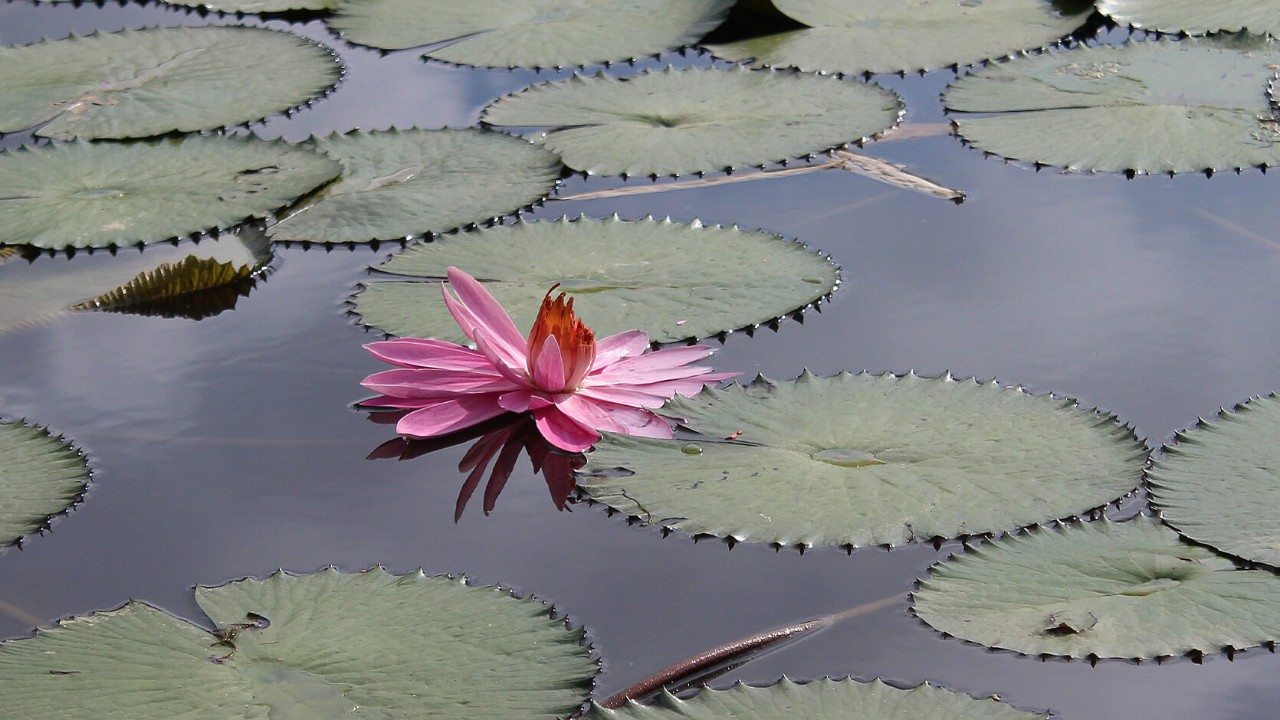 A sinking flower of the water lily denotes that the blooming cycle has ended.
A sinking flower of the water lily denotes that the blooming cycle has ended.
Floriferous in nature, a single tropical water lily plant may have up to seven or more blooms open at a time. The flowers follow a blooming cycle, where individual flowers open and close daily for three to four days. On the first day, the pistils (female sexual organs) become receptive to pollen from the time the flower opens until it closes later in the day. The flower opens again on the second and third day with maturing stamens (male sexual organs). This sequential maturation of the different sexual organs encourages cross-fertilisation as insect pollinators such as bees or beetles visit flowers from different plants at different times, inadvertently transferring pollen and cross-pollinating the flowers. After the end of the flowering cycle, the flower will close up for the final time and retract into the water, where it will start fruit development if fertilisation is successful.
Find these charismatic floating plants in the pond by the bridge to Satay by the Bay! But come down in the morning as these spectacular blooms close by noon!
Written by: Hazri Boey, Senior Horticulturist (Gardens Operations)
Hazri not only surrounds himself with plants at work; he has an abundant collection at home too! Having nurtured a keen interest in nature since young, he might have gone on to become a zookeeper caring for owls or sloths had it not been for his plant identification talent!
